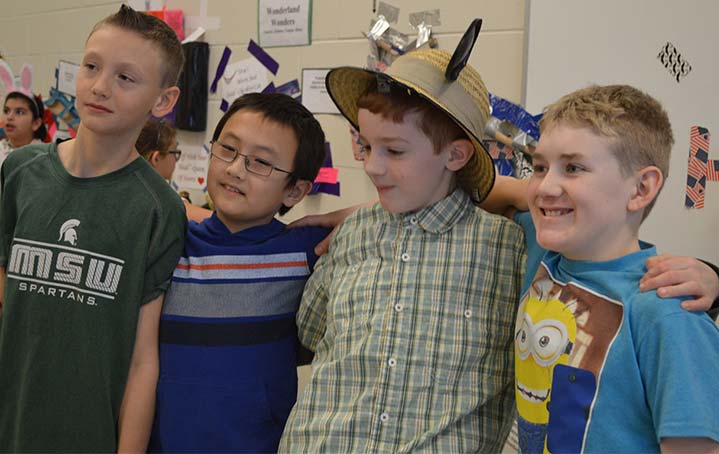Marbles, cardboard toilet-paper tubes, duct tape, an alligator head and the Star Wars Death Star were not items Isaac Newton pictured being used to test his laws of motion. But that’s what he would have seen when fifth-grade students created marble skate parks at the Emmons Lake Elementary gym recently.
To show how kinetic energy, potential energy, friction and inertia worked, three- and four-member teams used a marble rolling down a miniature skate park they had built out of these materials. With 72 students surrounding the gym showing off their crazy creations, the event also showed what a loud form of energy sounds like.
The teams proudly, loudly and in unison introduced themselves and their skate park’s names — Star Wars, FedEx Express, Minion Takeover and Super Sponge Bob were a few — to other Emmons Lake students and parents who came to check out the Rube Goldberg-like contraptions. Each team member had to explain one of the scientific concepts that sent the marble on a journey of twists and turns through cardboard tubes, boxes, plastic pipes and a massive amount of duct tape.
Once their explanations were over, one of the onlookers got to drop the marble into the skate park as the team watched anxiously to see if it made it to the bottom. If the marble stopped, it’d get a little help from human hands to make it to the bottom, then team members went to work on adjustments so it would hopefully have a successful, stop-free trip the next time.
While having the marble make it through without stopping was the goal, students got to use their imaginations decorating their project with parts like Legos, an MSU football helmet and stuffed animals. One team had the marble land in an alligator’s mouth.
It wasn’t a real alligator.
Students were given a couple of weeks to make their skate park after studying the motion concepts in class. The assignment gave students “authentic construction and design experience,” science teacher Brad Blaser said of the project that’s in its seventh year. He was helped this year by teachers Jeremy Geerdes and Stacey Jongekrijg.
Isabelle Myers explained why the hands-on learning was a good way to learn: “Some people are visual learners, and some people are verbal learners. I’m more of a visual, so this was good for me.”

Said Paula Russo, a parent who came to check out the creations, “I think it’s educational, yet fun. When a kid has fun learning, and it teaches them something, that’s great.”
Working Together
Besides science, several students said the project taught them teamwork. “We went through some tough times,” said Amara Houghtaling of her group. “We argued a little, but we made it through together.”
Mario Roeske agreed. “Teamwork in the beginning was kind of hard but we all got along for the most part,” he said.
Joseph Benedict appreciated his teacher for having them learn the laws of motion using the hands-on method. “We have Mr. Blaser, and it’s an amazing opportunity to work as a science class when he’s the teacher,” he said. “We don’t just do the book, we do the experiment.
“I loved it. It was a lot of hard work, and we put in a lot of effort into it.”
Then he turned and announced, “Let’s drop the marble!”










